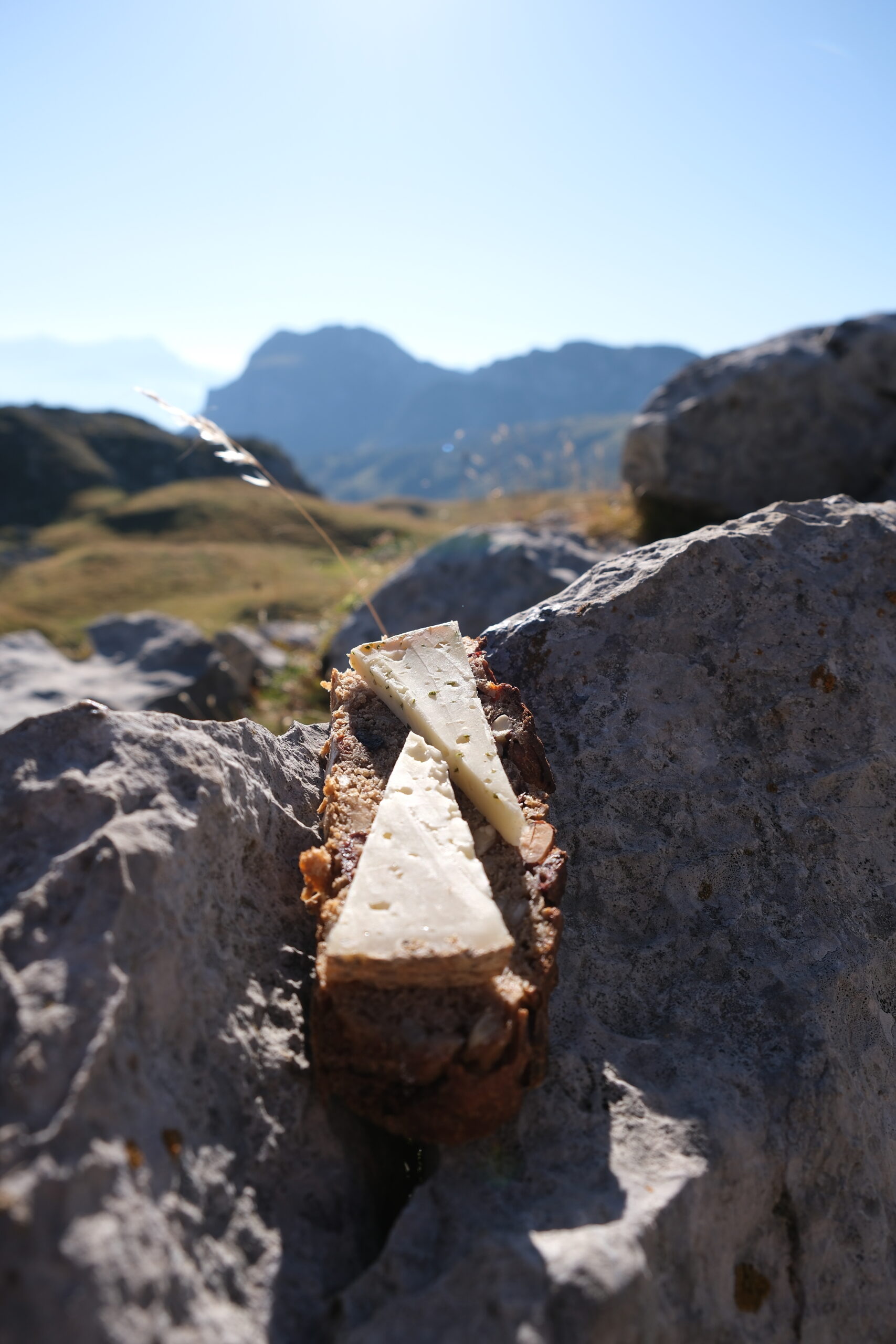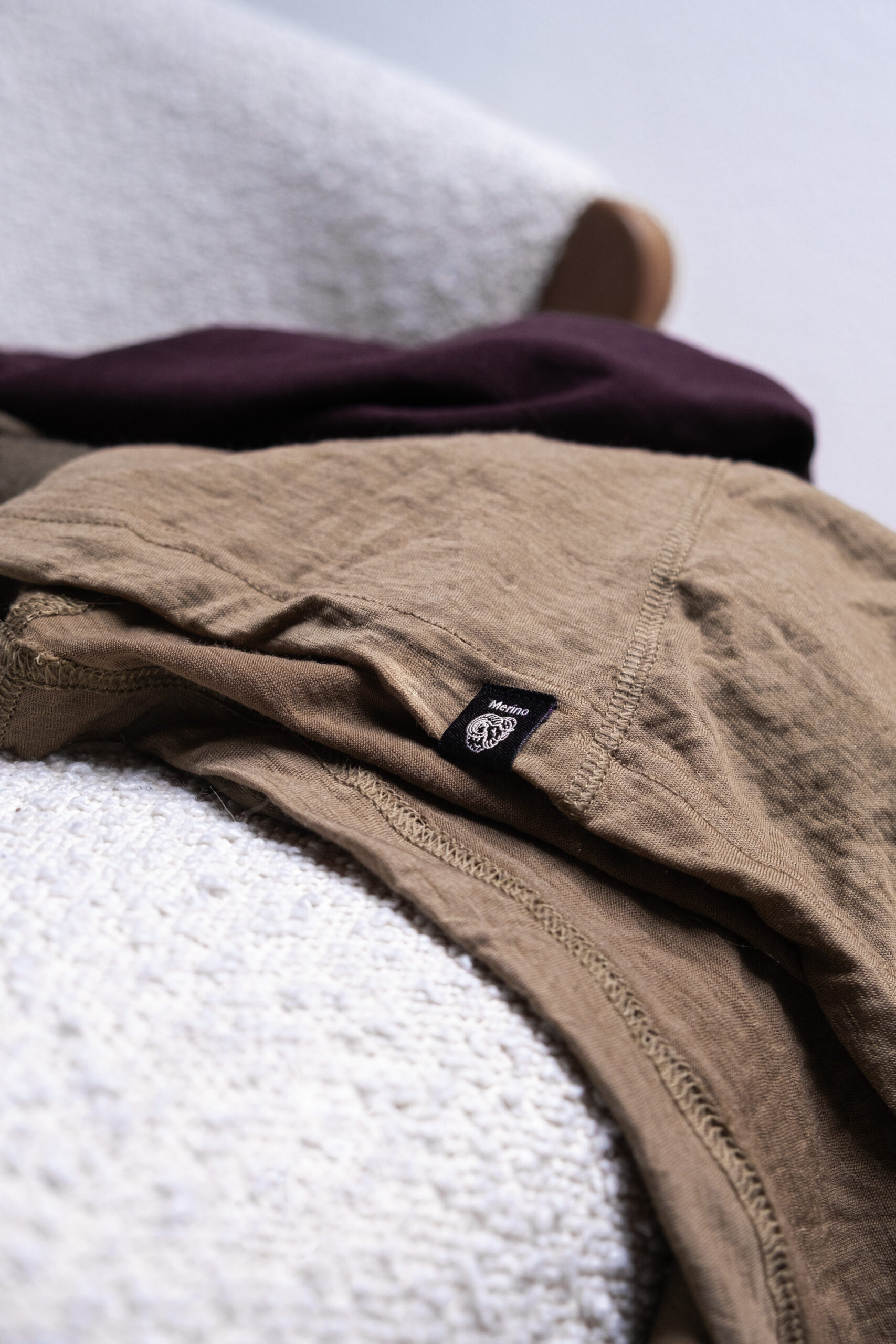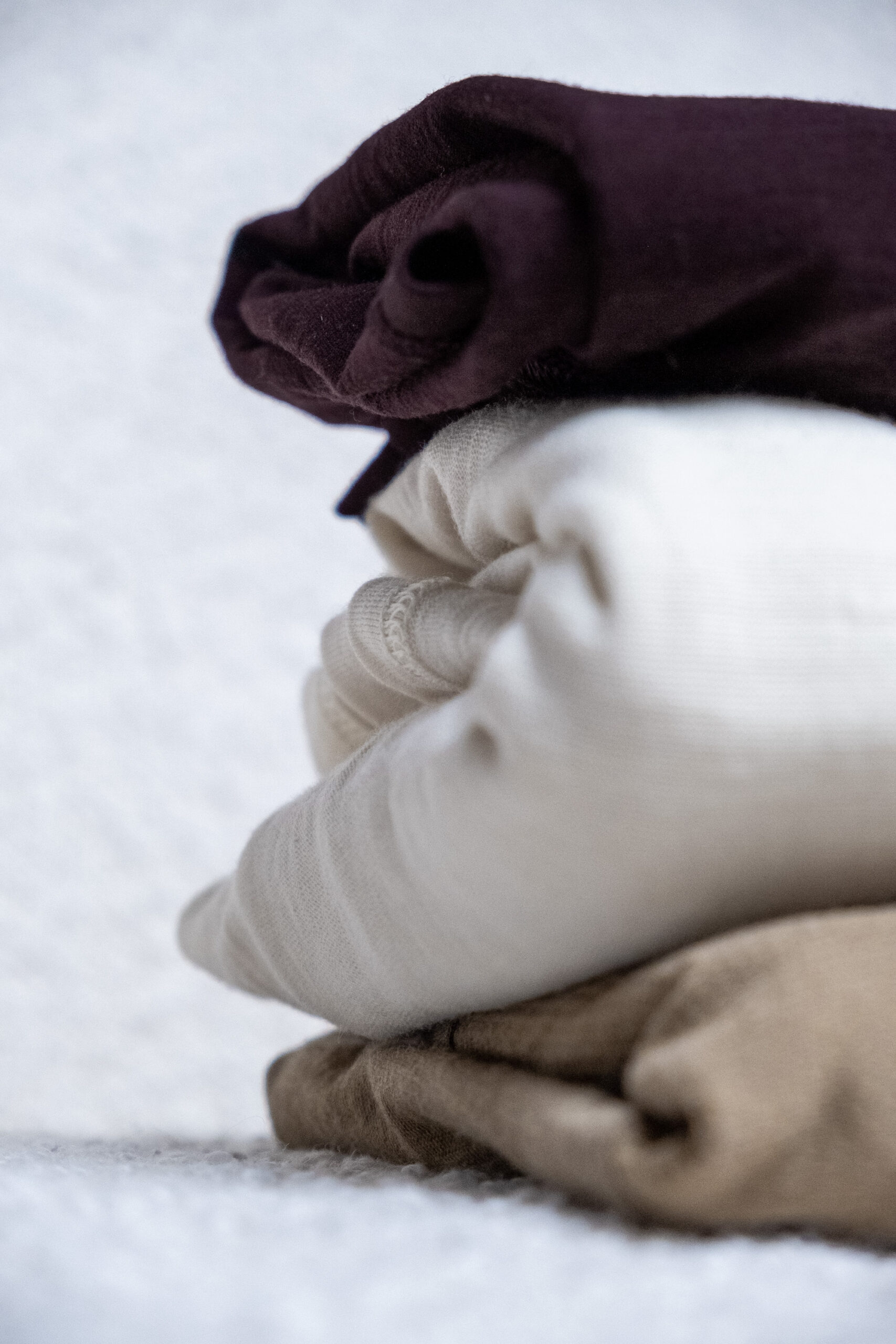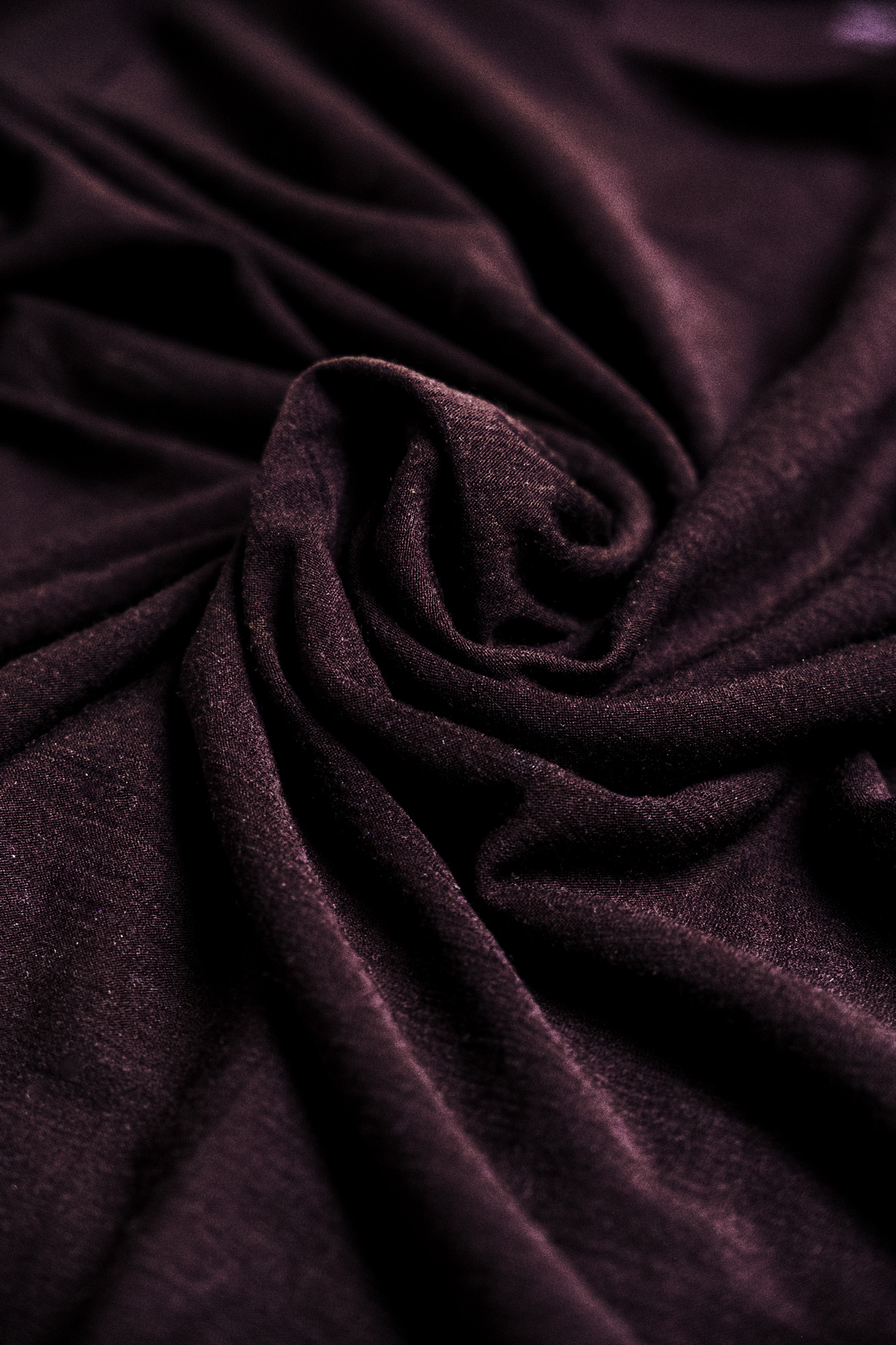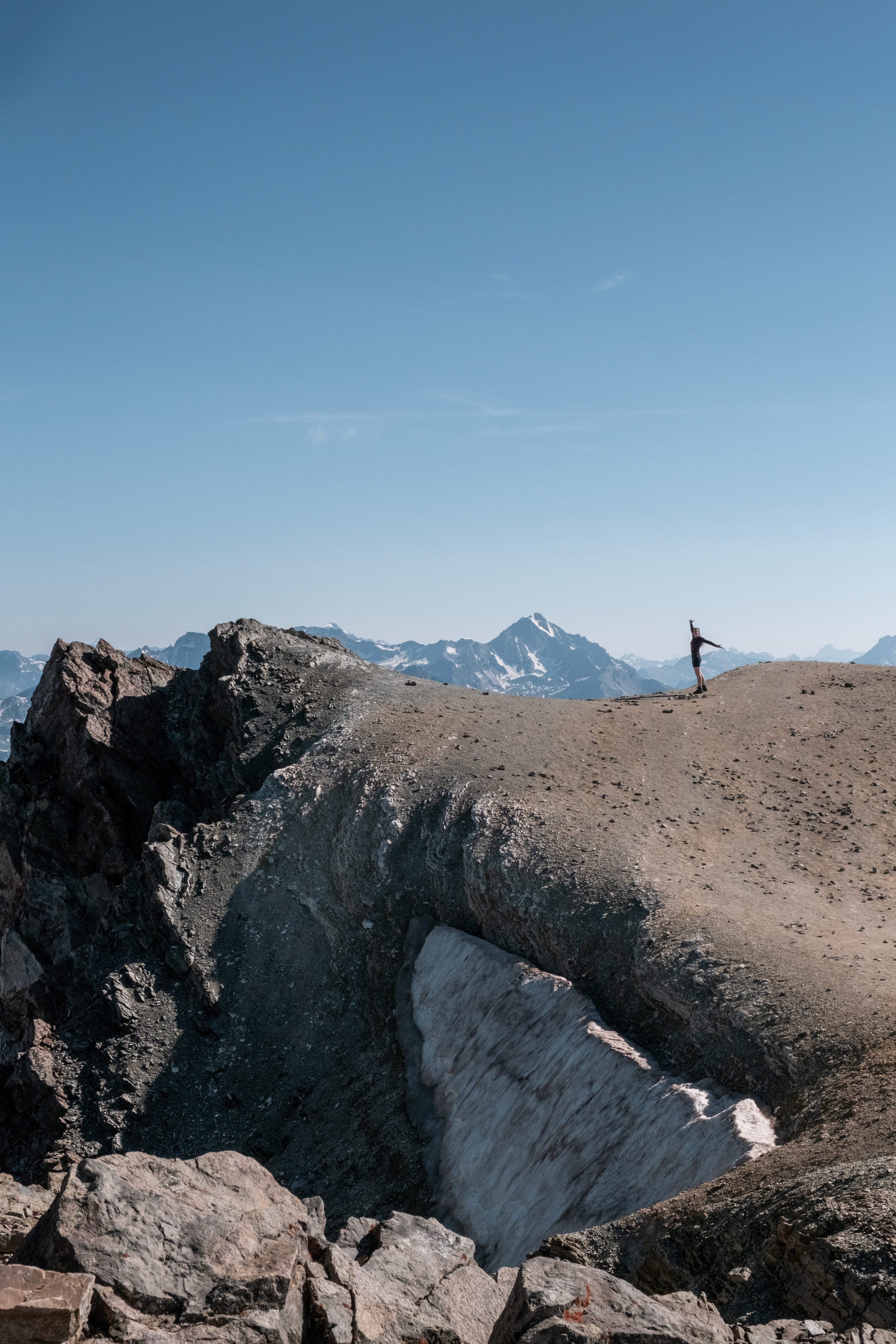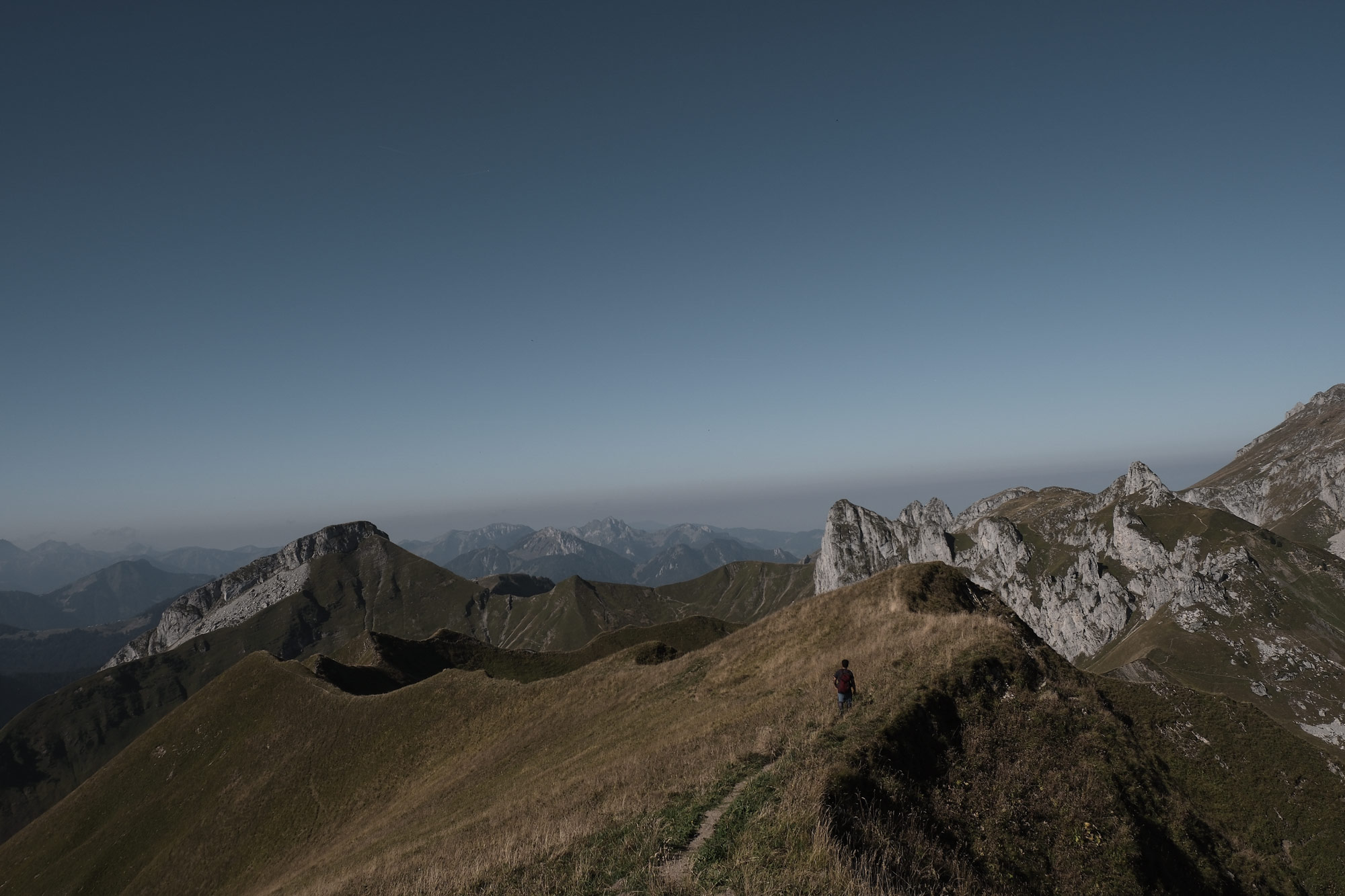The three-layer system is an effective way of dressing for the mountains, as it allows you to adapt to changing conditions while maintaining comfort and performance. Each layer has a specific role to play in optimising insulation, moisture management and protection from the elements. Here's an explanation of each layer:
1. First coat (base coat): moisture management
The first layer is the one in direct contact with your skin. Its main role is to wick away the moisture generated by perspiration to keep you dry. Good moisture management is crucial in the mountains, as moisture can quickly chill the body, especially in cold weather.
Recommended materials :
- Merino wool: soft, breathable and antibacterial, it stays dry even after long exertions.
- Synthetic fibres: such as polyester, which are also effective at wicking away moisture but can be less comfortable than wool.
2. Second layer (intermediate layer): thermal insulation
The second layer is there to insulate you from the cold. It traps body heat while remaining breathable to allow moisture to escape. This layer is essential for maintaining a comfortable body temperature, even in cold weather.
Recommended materials :
- Wool: ideal for its insulating power and breathability.
- Down: excellent insulation, but needs to be protected against moisture.
- Synthetic fibres (softshell, fleece): just as effective as down, but more resistant to moisture.
3. Third layer (outer layer): weather protection
The final layer is designed to protect against the elements, such as wind, rain and snow. It must be waterproof, windproof and breathable to allow water vapour to escape while protecting you from extreme weather conditions.
Recommended materials :
- Waterproof and breathable fabrics such as Gore-Tex or eVent (Hardshell). These materials offer excellent protection against external moisture while allowing perspiration to escape.
- Mountain jackets and trousers in lightweight, compact materials that can be easily removed or adjusted as required.
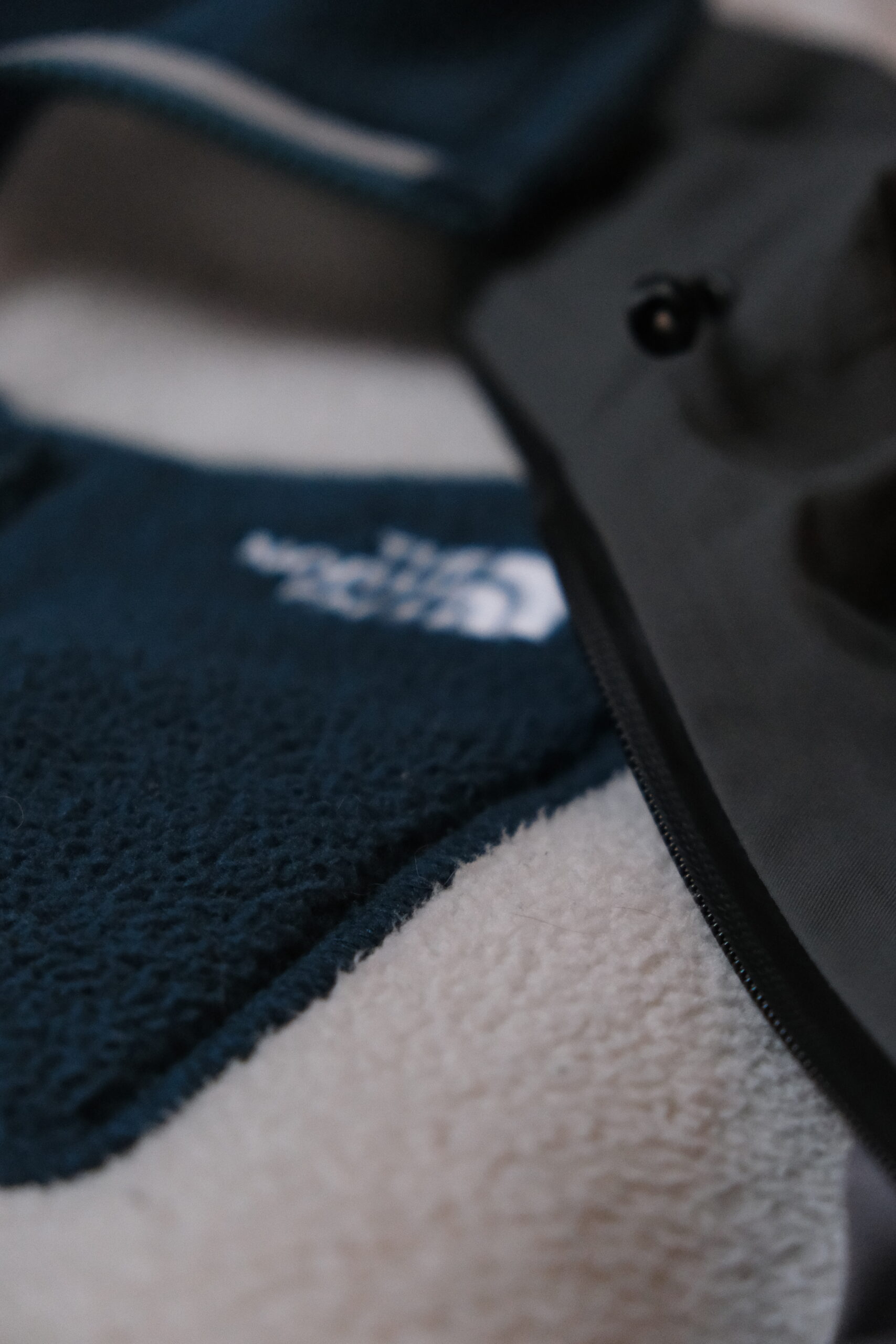

Why use this three-layer system?
The advantage of this system is that it allows you to adapt easily to variations in temperature and humidity. For example, when climbing, you can remove a layer if you're too hot, and if it cools down quickly or rains, you can add the outer layer to protect yourself. Layering these layers also means better management of body temperature and overall comfort, without overheating or feeling cold.
In short
In the mountains, it's essential to have a versatile clothing system that's adapted to every situation. The three-layer system allows you to adapt to all types of weather conditions, while optimising temperature regulation and moisture management. Whether you're a hiker, skier or mountaineer, this system is an excellent way of staying comfortable and performing well in often demanding environments.



